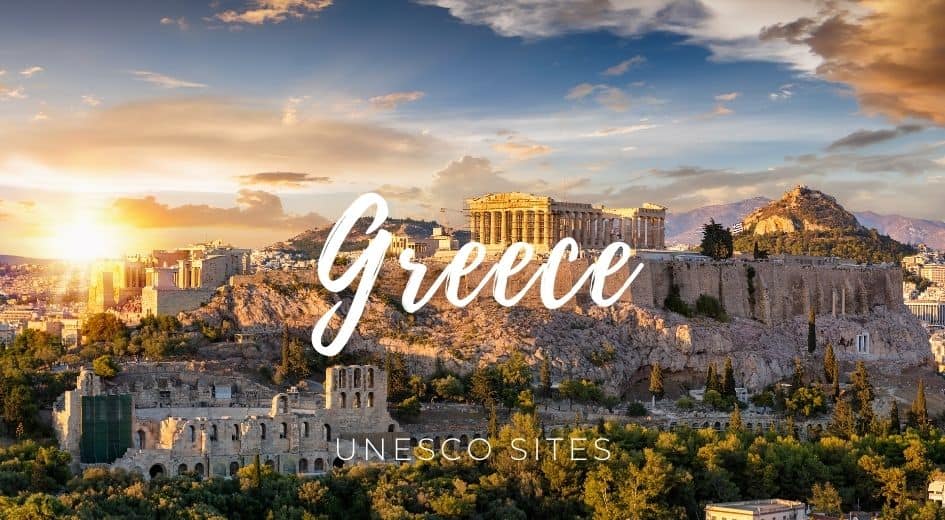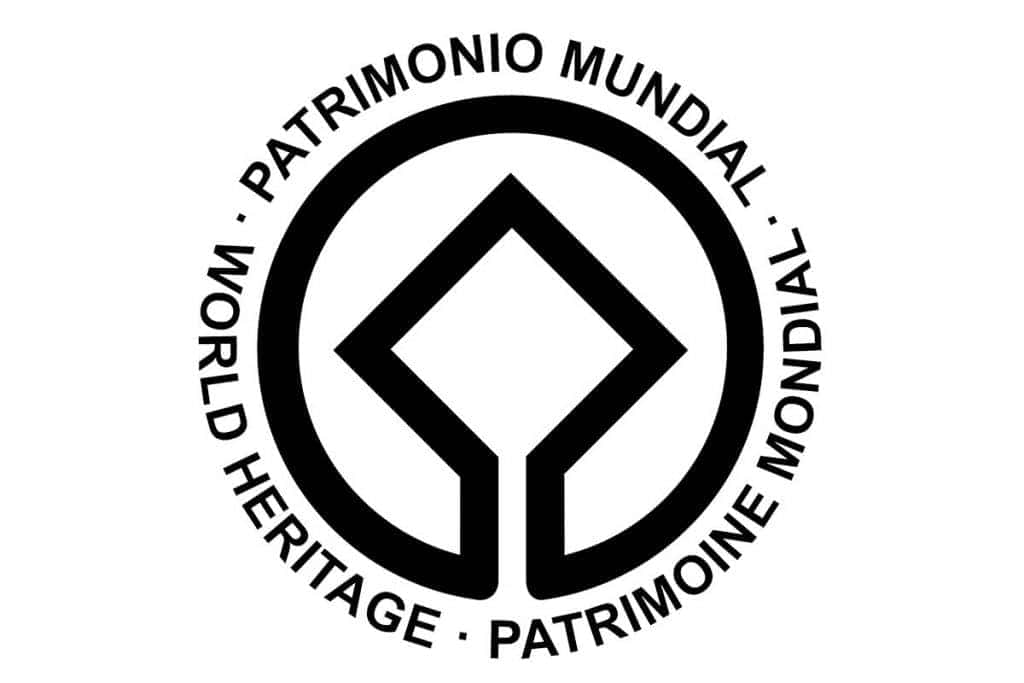Table of Contents


Greece UNESCO has registered 18 sites on the World Heritage list and 14 on the tentative list.
Some places are so interesting that it’s relevant to keep them for future generations. This is why UNESCO has built a list of crucial classified properties in which superb places stand out for their aesthetic, natural, artistic, or cultural significance.
More than a thousand places are registered as Unesco’s World Heritage worldwide. Due to my interest in visiting World Heritage sites, I compiled the UNESCO list in Greece and the corresponding map.
Greece UNESCO list
- Acropolis, Athens
- Archaeological Site of Aigai (modern name Vergina)
- Archaeological Site of Delphi
- Archaeological Site of Mystras
- Archaeological Site of Olympia
- Archaeological Site of Philippi
- Archaeological Sites of Mycenae and Tiryns
- Delos
- Medieval City of Rhodes
- Monasteries of Daphni, Hosios Loukas and Nea Moni of Chios
- Old Town of Corfu
- Paleochristian and Byzantine Monuments of Thessalonika
- Pythagoreion and Heraion of Samos
- Sanctuary of Asklepios at Epidaurus
- Temple of Apollo Epicurius at Bassae
- The Historic Centre (Chorá) with the Monastery of Saint-John the Theologian and the Cave of the Apocalypse on the Island of Pátmos
- Meteora
- Mount Athos
Greece UNESCO Map
Click on the blue pins to view more relevant information about each World Heritage site in Greece.
Description
- Episcopal Complex of the Euphrasian Basilica in the Historic Centre of Poreč – a collection of historical landmarks that date back to the 6th century, including a basilica, a baptistery, and a palace.
- The Historic City of Trogir is a well-preserved historic town with stunning architecture and cultural landmarks, including churches, palaces, and fortifications.
- Historical Complex of Split with the Palace of Diocletian – a collection of historic landmarks and buildings that date back to the Roman era, including a palace, a temple, and a mausoleum.
- Old City of Dubrovnik is a well-preserved historic city with stunning architecture and cultural landmarks, including churches, palaces, and fortifications.
- Stari Grad Plain – a well-preserved agricultural landscape that has remained unchanged for over 2,000 years and features unique cultural and historical significance.
- Stećci Medieval Tombstone Graveyards – a collection of medieval tombstones that date back to the 12th century and are known for their unique artistic and cultural significance.
- The Cathedral of St James in Šibenik – a well-preserved Gothic-Renaissance cathedral that dates back to the 15th century and is known for its unique architectural and artistic features.
- Venetian Works of Defence between the 16th and 17th Centuries: Stato da Terra – Western Stato da Mar – a collection of historic fortifications and defensive structures built by the Venetian Republic to protect its territories.
- Ancient and Primeval Beech Forests of the Carpathians and Other Regions of Europe – a collection of forests that have remained largely untouched for thousands of years, representing the continent’s primeval beech ecosystems.
- Plitvice Lakes National Park – a stunning natural landscape with interconnected lakes, waterfalls, and a diverse range of plant and animal species.
- The Old Town of Corfu is a well-preserved historic city with a unique blend of Venetian, French, and British architectural styles.
- Paleochristian and Byzantine Monuments of Thessalonika – a collection of historical landmarks and monuments that date back to the early Christian and Byzantine eras.
- Pythagoreion and Heraion of Samos – a collection of ancient ruins and landmarks that date back to the classical Greek era.
- Sanctuary of Asklepios at Epidaurus – a well-preserved ancient Greek sanctuary with stunning architecture and cultural landmarks.
- Temple of Apollo Epicurius at Bassae – a well-preserved ancient Greek temple known for its unique architectural and artistic features.
- The Historic Centre (Chorá) with the Monastery of Saint-John the Theologian and the Cave of the Apocalypse on the Island of Pátmos – a collection of historic landmarks and religious sites that date back to the Byzantine era.
- Meteora – a stunning natural landscape with towering rock formations home to several well-preserved Eastern Orthodox monasteries.
- Mount Athos is a unique monastic community home to several well-preserved Eastern Orthodox monasteries and diverse plant and animal species.
UNESCO World Heritage Sites in Greece have protected places for their cultural and natural importance.
Sites on the Tentative List
- Late Medieval Bastioned Fortifications in Greece
- National Park of Dadia – Lefkimi – Souflion
- Ancient Lavrion
- Petrified Forest of Lesvos
- Archaeological site of Ancient Messene
- Minoan Palatial Centres (Knossos, Phaistos, Malia, Zakros, Kydonia)
- Archaeological site of Nikopolis
- The broader region of Mount Olympus
- The Area of the Prespes Lakes: Megali and Mikri Prespa which includes Byzantine and post-Byzantine monuments
- Gorge of Samaria National Park
- Fortress of Spinalonga
- Ancient Towers of the Aegean Sea
- Zagorochoria – North Pindos National Park
- Ancient Greek Theatres


